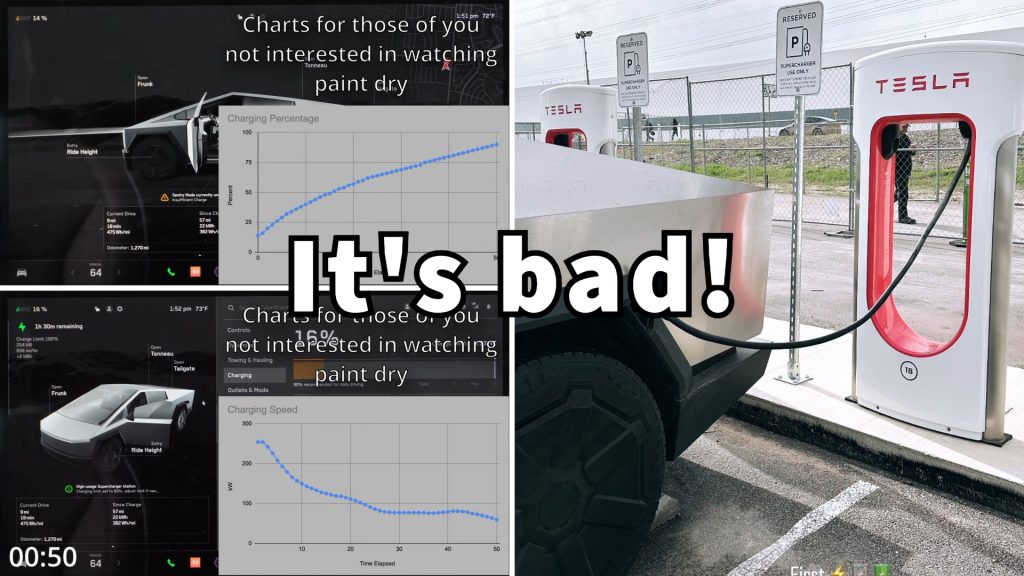The charging performance of Tesla’s much-anticipated Cybertruck, equipped with the new 4680 batteries (that’s 46 mm in diameter and 80 mm high), has come under scrutiny. Concerns initially arose with the Model Y, which experienced a significant drop in charging speed after adopting the 4680 battery. The recently exposed charging curve of the Cybertruck appears to validate these worries, suggesting that this electric pickup truck may face extended charging times.
Charging speed could be restricted on the software level to gather some specific data for the sake of evaluation

The Cybertruck marks Tesla’s first full utilization of the 4680 batteries, leading to the cessation of 4680 Model Y production at the Texas Gigafactory earlier this year due to reported battery performance issues. Early charging data reveals a prolonged charging time, surpassing Tesla’s official claim of reaching 80% in 25 minutes. The primary challenge stems from a rapid early drop in charging power, extending the actual charging time beyond expectations.
To address skepticism and potential repetition of the Model Y’s issues, Tesla introduced the “Cybercell,” a more advanced version of the 4680 battery. Although claiming a 10% increase in energy density, specific charging performance data has not been provided. Initial charging scenes evoke memories of the Model Y’s suboptimal performance. However, drawing conclusive statements wasn’t previously possible due the the lack of a complete charging curve.
Recently, a Cynertruck was spotted Cybertruck charging at a V3 Supercharger station. It revealed a charging power of 148kW at 35% capacity, which is significantly lower than other Tesla models with similar power levels. The estimated time to charge to 80% stretched to 35 minutes, prompting discussions among Tesla enthusiasts about potential connections to lower-power V2 Superchargers instead of a V3 one. Speculation also arose regarding the Cybertruck’s potential optimization for 800V superchargers, which seemingly justifies the relatively poor performance with a 400V charger. But then again, Tesla uses series-parallel technology to charge batteries at 400V and 800V without an inverter.
Recent insights from a Cybertruck owner shed light on the charging process. The truck takes 40 minutes to reach 80% power, with a sharp decline in charging power from 250kW at 20% to 150kW at 40%, stabilizing around 80kW between 65% and 85%. However, it could be possible that
Tesla intentionally limited the charging performance at the software level to gather some specific data for evaluating and optimizing long-term battery performance. Historically, Tesla has unlocked additional battery capacity and increased charging speeds through software updates after ensuring safety protocols. The hope is that Cybertruck will receive similar optimization upgrades.
Related:
- Get $100 Off on Vivo X100 Pro at Giztop
- Xiaomi Smart Band 8 Pro Genshin Impact Special Edition up for sale
- Giztop’s Christmas Holiday Savings: Unwrap Joy with Exclusive Discount
- Get the Realme GT5 Pro phone on Giztop for $599
- Best VR / AR Headsets of 2023 – Gizmochina







